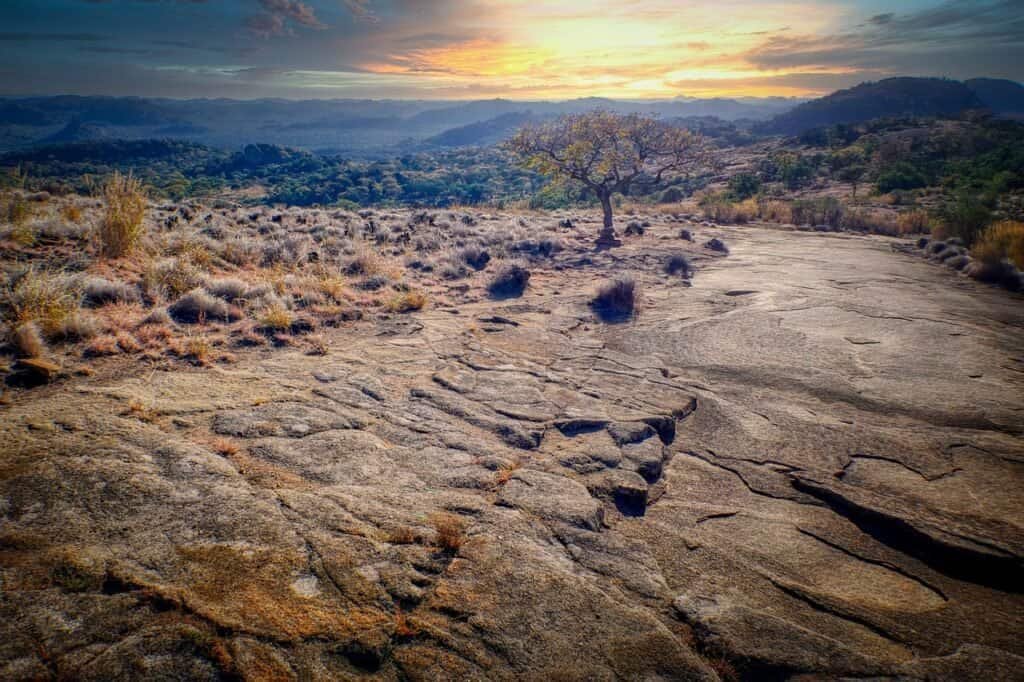Zimbabwe is a country with a rich history and diverse cultural heritage, and one of the best places to experience this is in the stunning Matobo Hills. This UNESCO World Heritage Site, located just south of Bulawayo, offers a wealth of archaeological, historical, and cultural attractions for travellers looking to delve into Zimbabwe’s past.
In this article, we’ll explore some of the most significant sites and experiences that make the Matobo Hills a must-visit destination for anyone interested in Zimbabwe’s fascinating cultural heritage, and just one reason to visit this amazing country.
The Unique Landscape of the Matobo Hills

The Matobo Hills are a distinctive landscape, characterised by their impressive granite rock formations, known as kopjes. These massive boulders have been sculpted by millions of years of erosion, resulting in unique shapes and balancing acts that are a true wonder to behold. The hills are also home to a diverse range of plant and animal species, including the rare and endangered black and white rhinoceros, making the area not only culturally significant but also an important conservation site.
The Rich History of the Matobo Hills

Rock Art Sites
One of the most striking features of the Matobo Hills is the abundance of rock art sites, with over 3,000 known locations. These ancient paintings, created by the San people over a period of at least 13,000 years, depict a variety of scenes, including animals, human figures, and abstract patterns. Some of the most well-known rock art sites in the Matobo Hills include Nswatugi Cave, Bambata Cave, and Inanke Cave.
At Nswatugi Cave, visitors can view a large panel of beautifully preserved paintings depicting animals such as giraffes, elephants, and kudu. Bambata Cave, one of the most famous rock art sites in the area, contains a stunning frieze of animals, including sable antelope and eland, as well as human figures. Inanke Cave, accessible via a challenging but rewarding hike, is home to some of the most intricate and well-preserved paintings in the Matobo Hills, including a striking scene of a group of women dancing.
Historical Sites
In addition to the ancient rock art, the Matobo Hills also hold historical significance dating back to more recent times. The area played a pivotal role in the conflicts between the Ndebele people and European settlers during the late 19th century, and several historical sites in the hills commemorate these events.
One such site is the grave of Cecil John Rhodes, the British colonialist and founder of Rhodesia, now Zimbabwe. Rhodes chose to be buried at a place called World’s View, a spectacular vantage point overlooking the surrounding landscape. Today, visitors can pay their respects at Rhodes’ grave and take in the breathtaking views from this remarkable location.
Another significant historical site in the Matobo Hills is the Njelele Shrine, an important spiritual and cultural centre for the Ndebele people. This sacred place is used for rainmaking ceremonies and traditional rituals, and although it is not open to tourists, its significance to the local culture makes it an important part of the Matobo Hills’ rich history.
Experiencing the Culture of the Matobo Hills
Village Visits and Cultural Experiences
One of the best ways to immerse yourself in the culture of the Matobo Hills is by visiting a local village and participating in traditional activities. Many tour operators offer guided village visits, where travellers can learn about the daily lives of the local people, their customs, and their traditions.
These visits often include the opportunity to try traditional foods, watch or participate in local dances, and learn about traditional crafts such as pottery and basket weaving. By engaging with the local community, visitors can gain a deeper understanding of the rich cultural heritage that has shaped the Matobo Hills for centuries.
Traditional Music and Dance Performances
Music and dance are integral parts of the culture in the Matobo Hills, and experiencing a live performance is a fantastic way to connect with the area’s vibrant traditions. Some lodges and tour operators organise cultural evenings, where guests can enjoy traditional music and dance performances by local artists.
These performances often showcase the unique rhythms and melodies of the region, as well as the impressive skills of the performers, offering a memorable and enriching cultural experience.
The Amagugu International Heritage Centre
For travellers interested in learning more about the history and culture of the Matobo Hills and Zimbabwe as a whole, a visit to the Amagugu International Heritage Centre is a must. This innovative cultural institution aims to preserve and promote the cultural heritage of the region through a variety of educational programmes, exhibitions, and events. Visitors can explore the centre’s fascinating exhibits, attend workshops on traditional crafts, or take part in guided tours that delve into the area’s rich history and cultural heritage.
Wildlife and Nature Experiences in the Matobo Hills
In addition to its cultural attractions, the Matobo Hills are also home to a diverse array of wildlife, making it an excellent destination for nature enthusiasts. The Matobo National Park, which encompasses much of the Matobo Hills, offers visitors the chance to see a variety of animal species, including the endangered black and white rhinoceros, as well as leopards, klipspringers, and numerous bird species. The park is also home to the world’s highest concentration of black eagles, making it a top destination for birdwatchers.
Guided game drives and walking safaris are popular ways to explore the wildlife of the Matobo Hills, offering visitors the opportunity to get up close and personal with the area’s unique flora and fauna. The park’s knowledgeable guides are well-versed in the local ecosystems and can help to provide a deeper understanding of the incredible biodiversity found in the Matobo Hills.
In conclusion, the Matobo Hills offer a wealth of cultural, historical, and natural attractions for visitors to explore. From the ancient rock art sites and historical landmarks to the vibrant traditional music and dance performances, a trip to the Matobo Hills promises an unforgettable journey into the heart of Zimbabwe’s rich cultural heritage. With its stunning landscape, unique wildlife, and fascinating history, the Matobo Hills truly are one of Zimbabwe’s hidden gems.
If you want to experience the Matobo Hills for yourself, check out this sample itinerary and get in touch to personalise your Zimbabwe adventure exactly how you want it.
